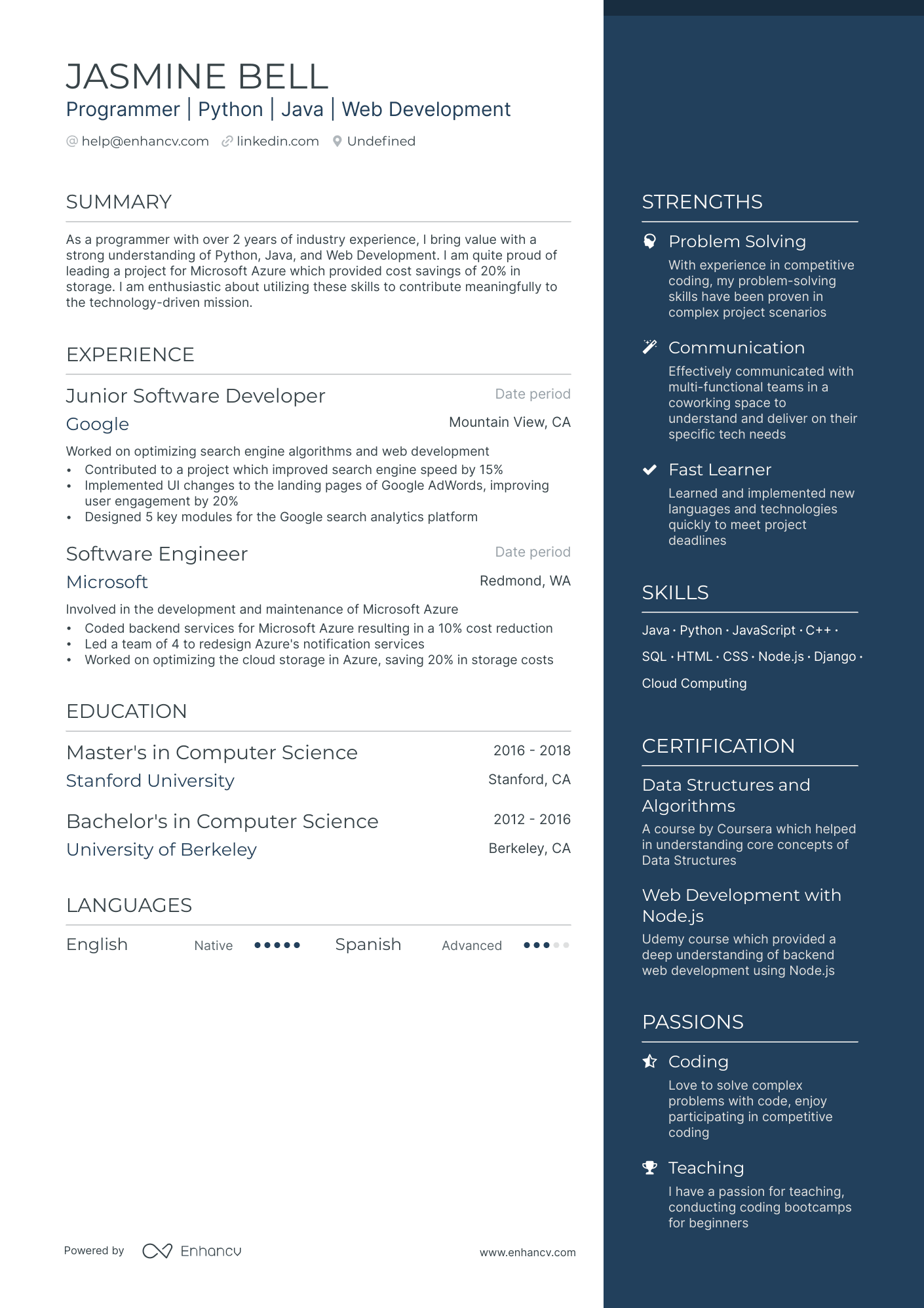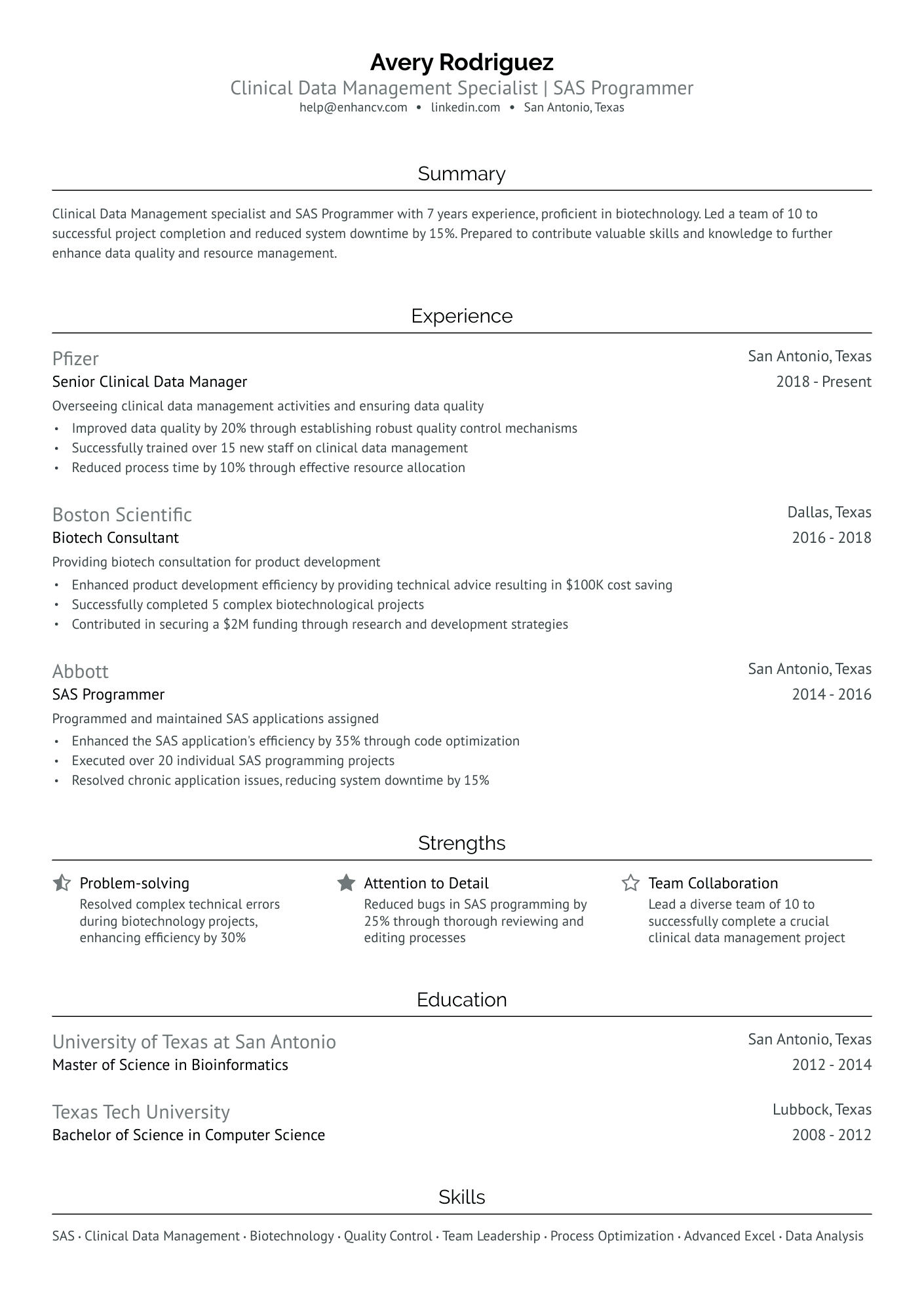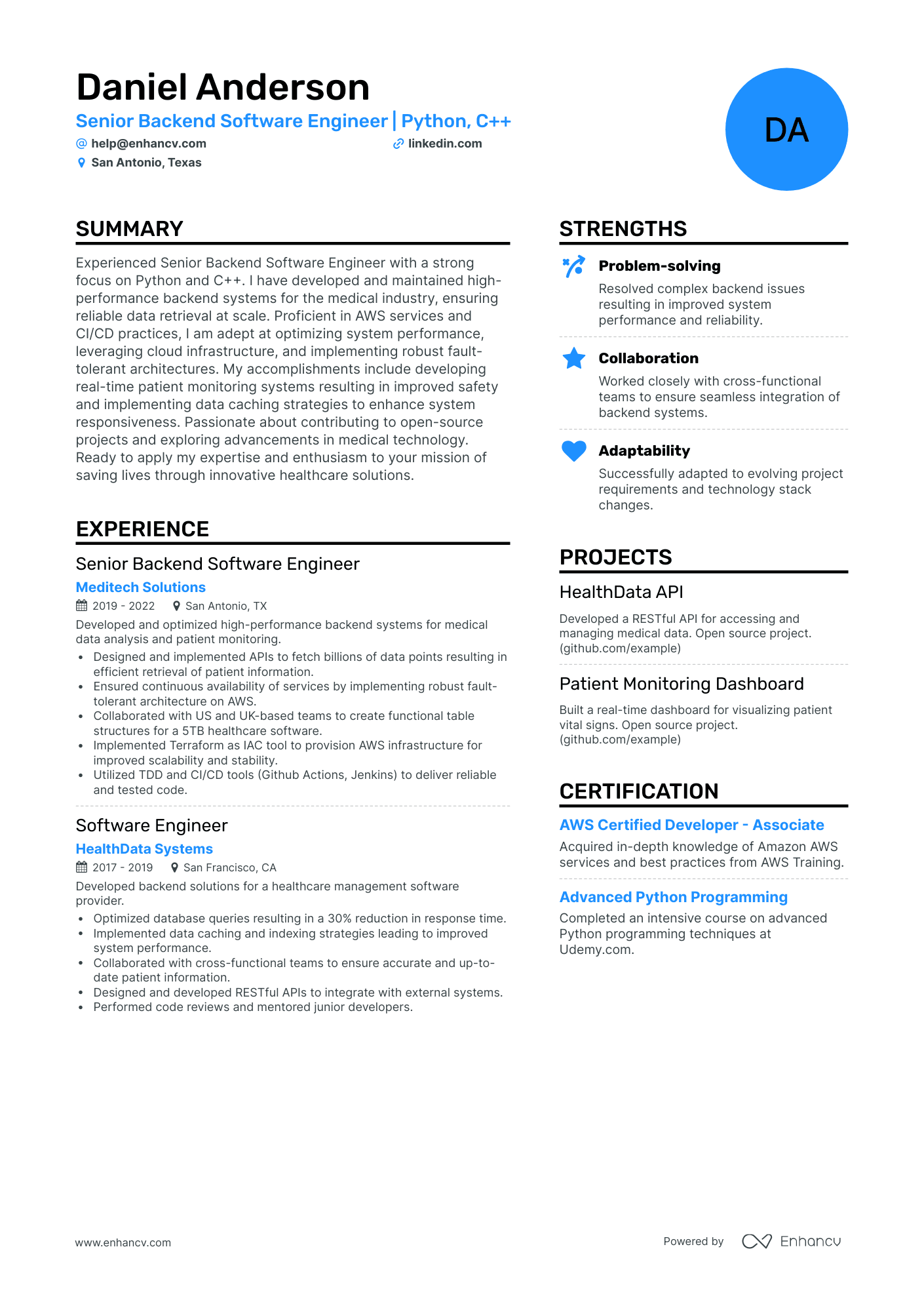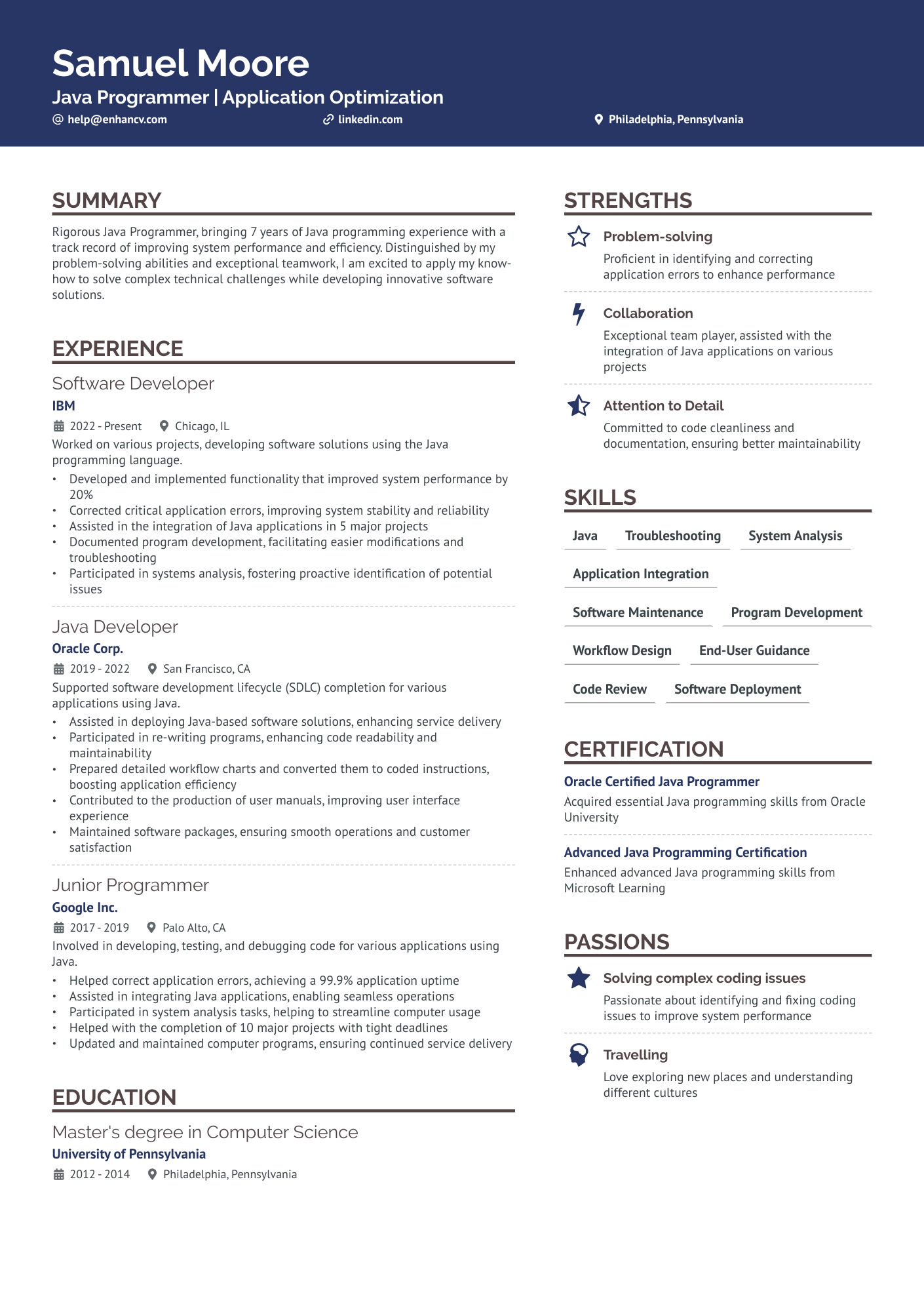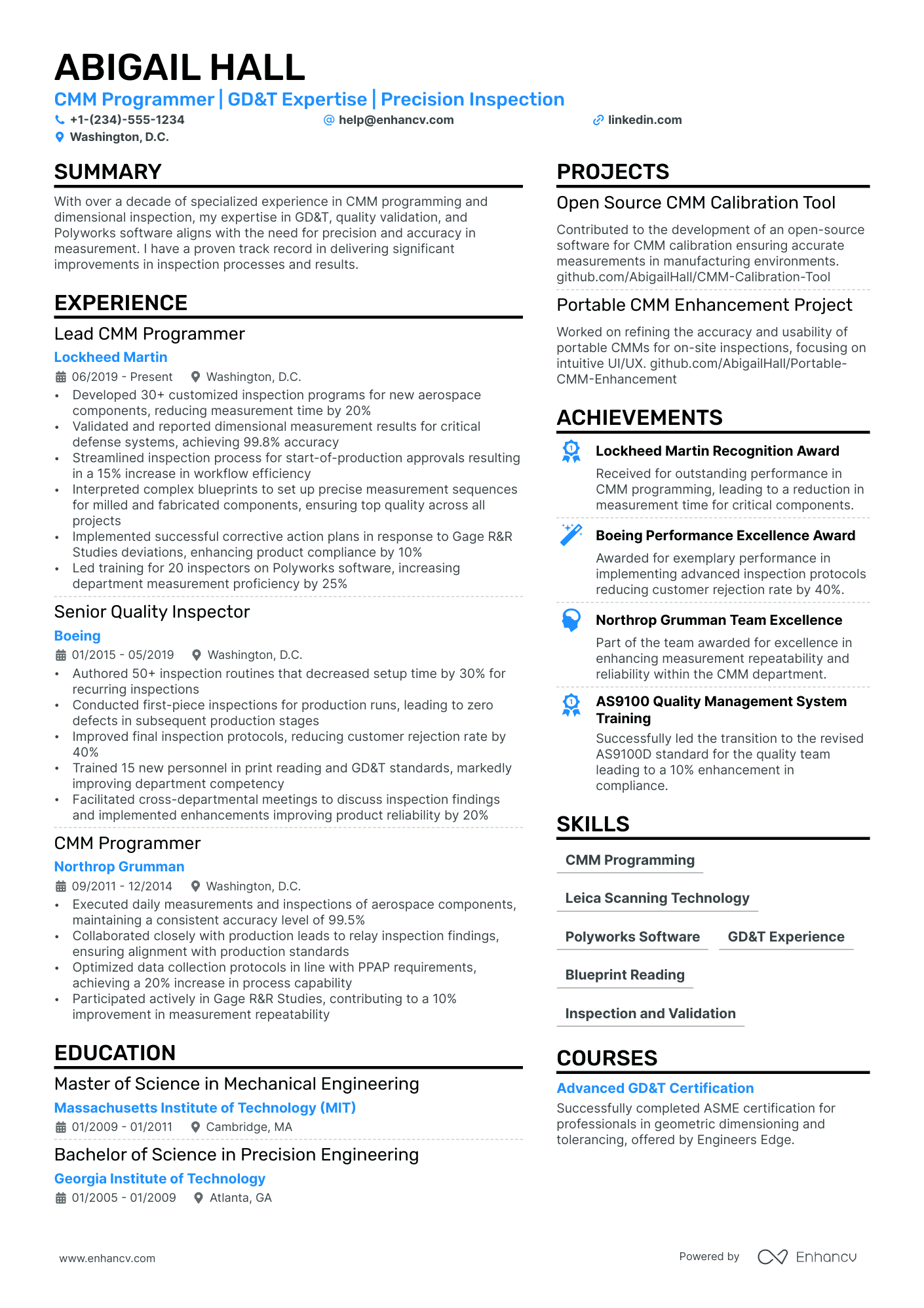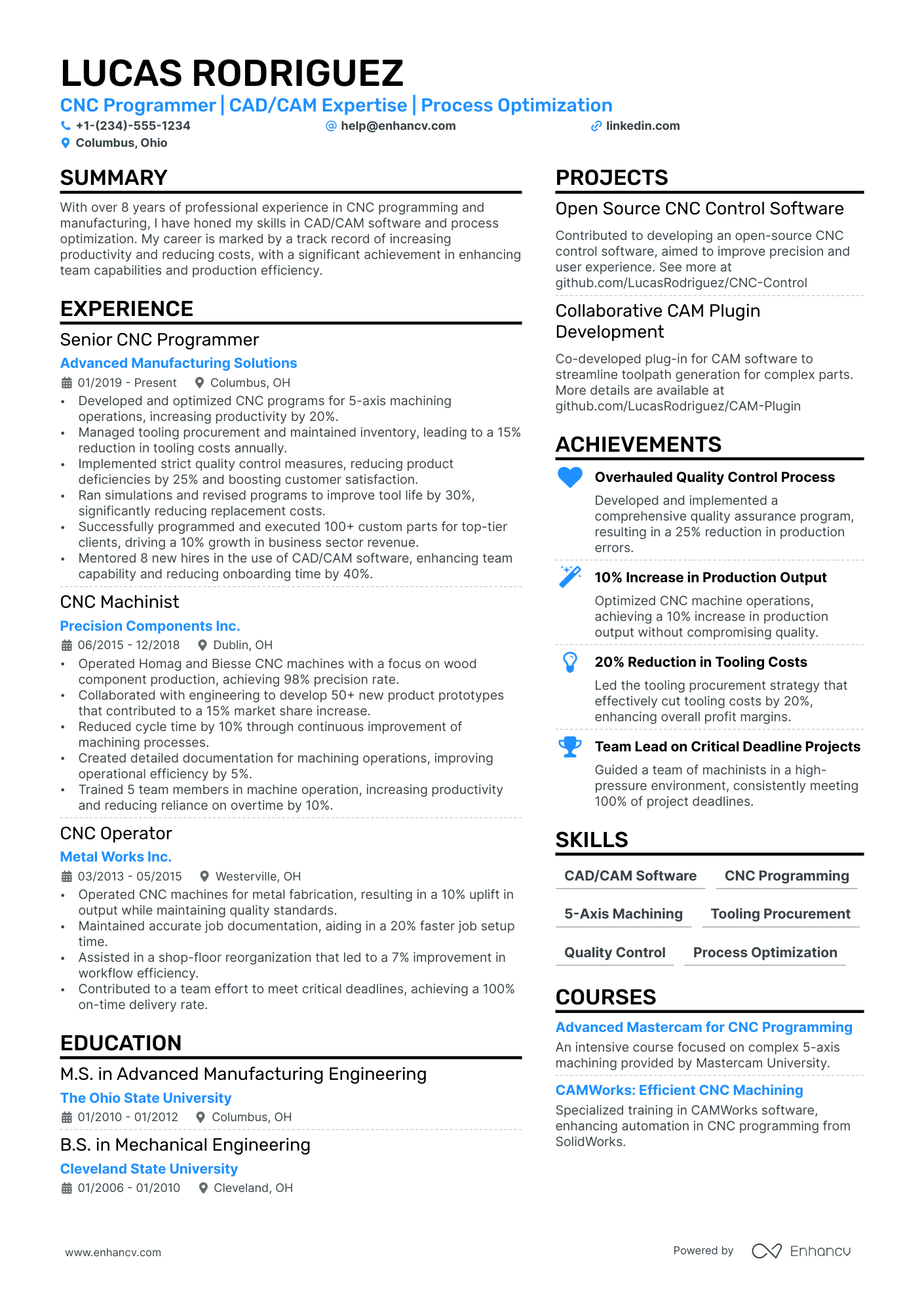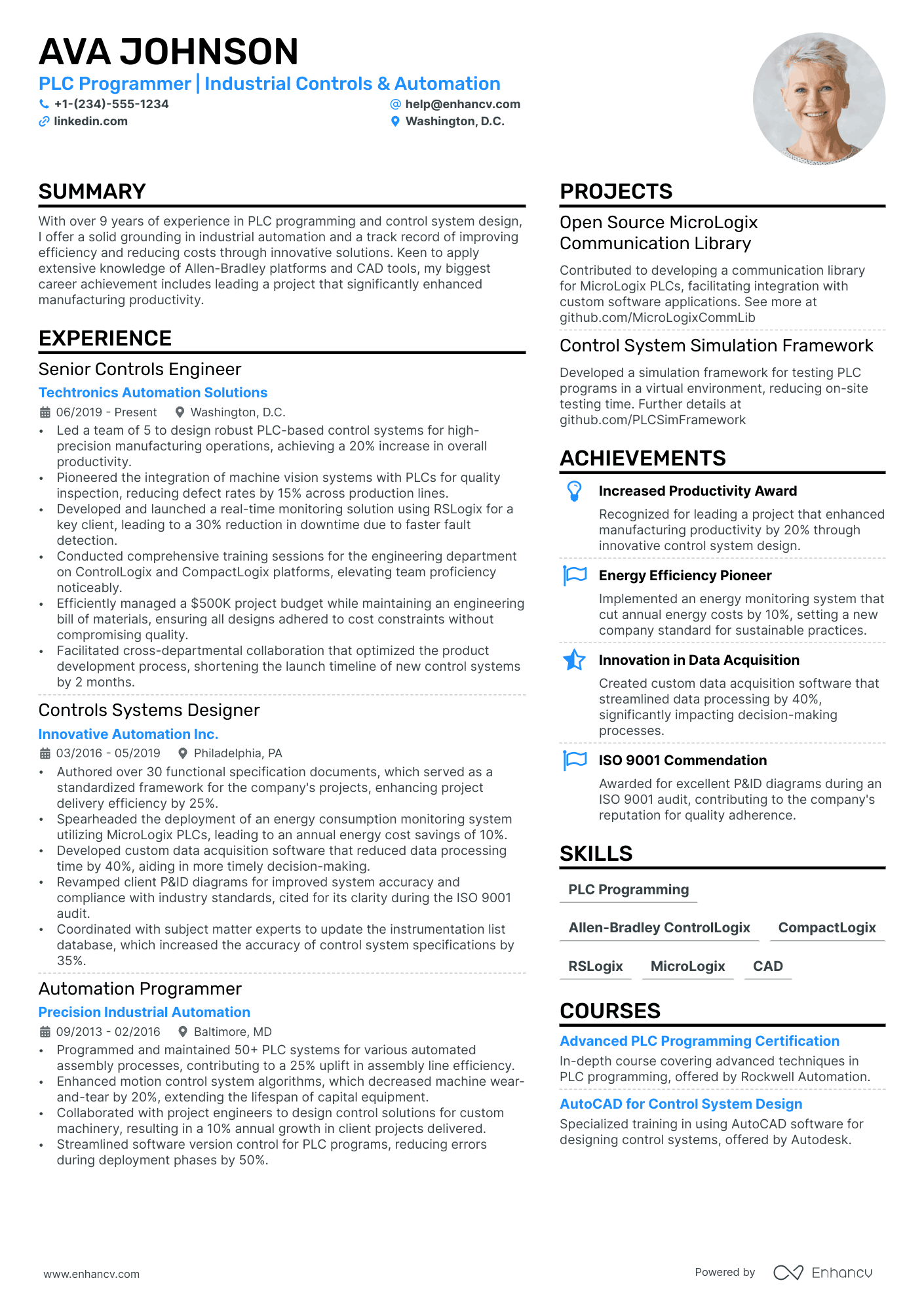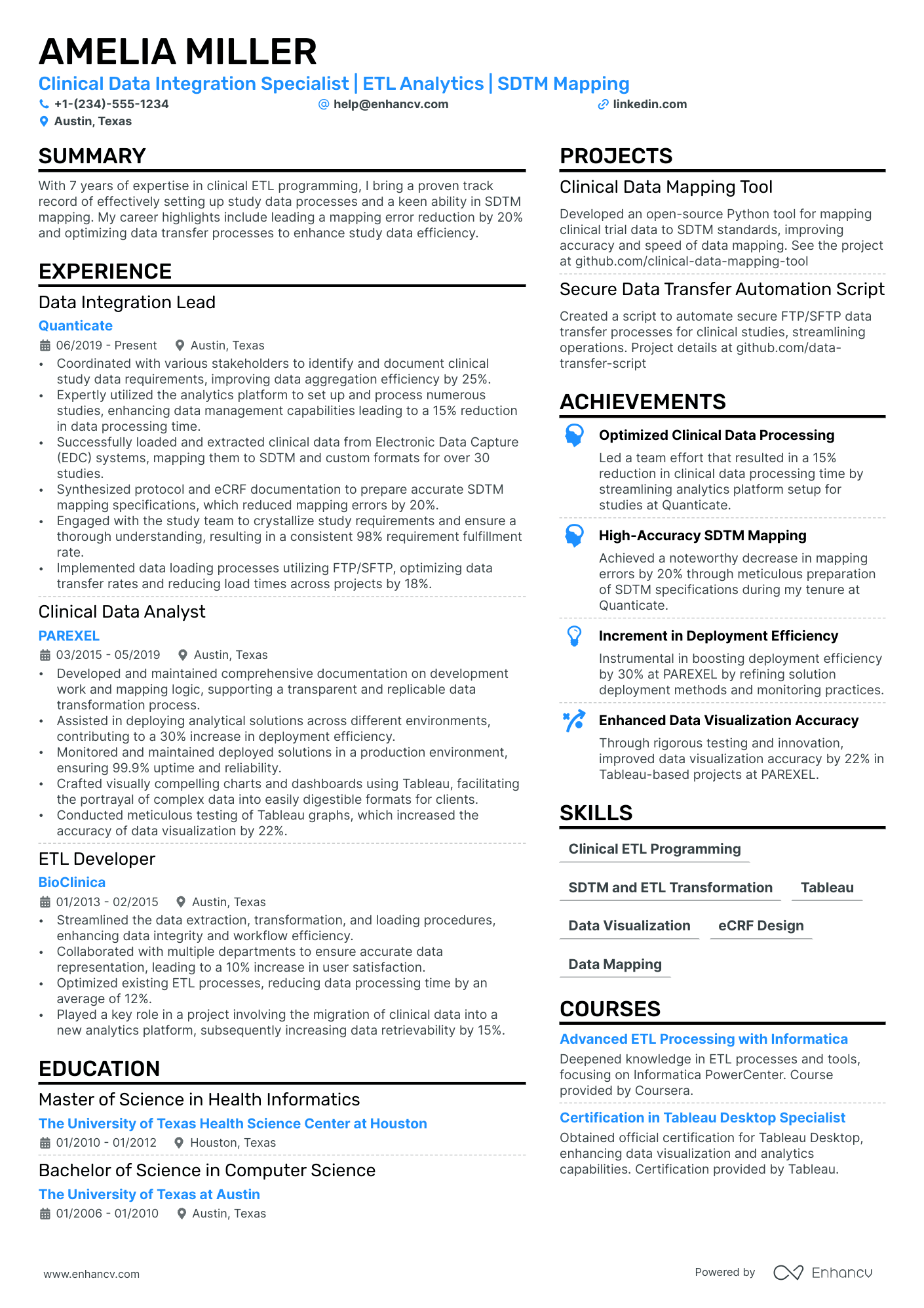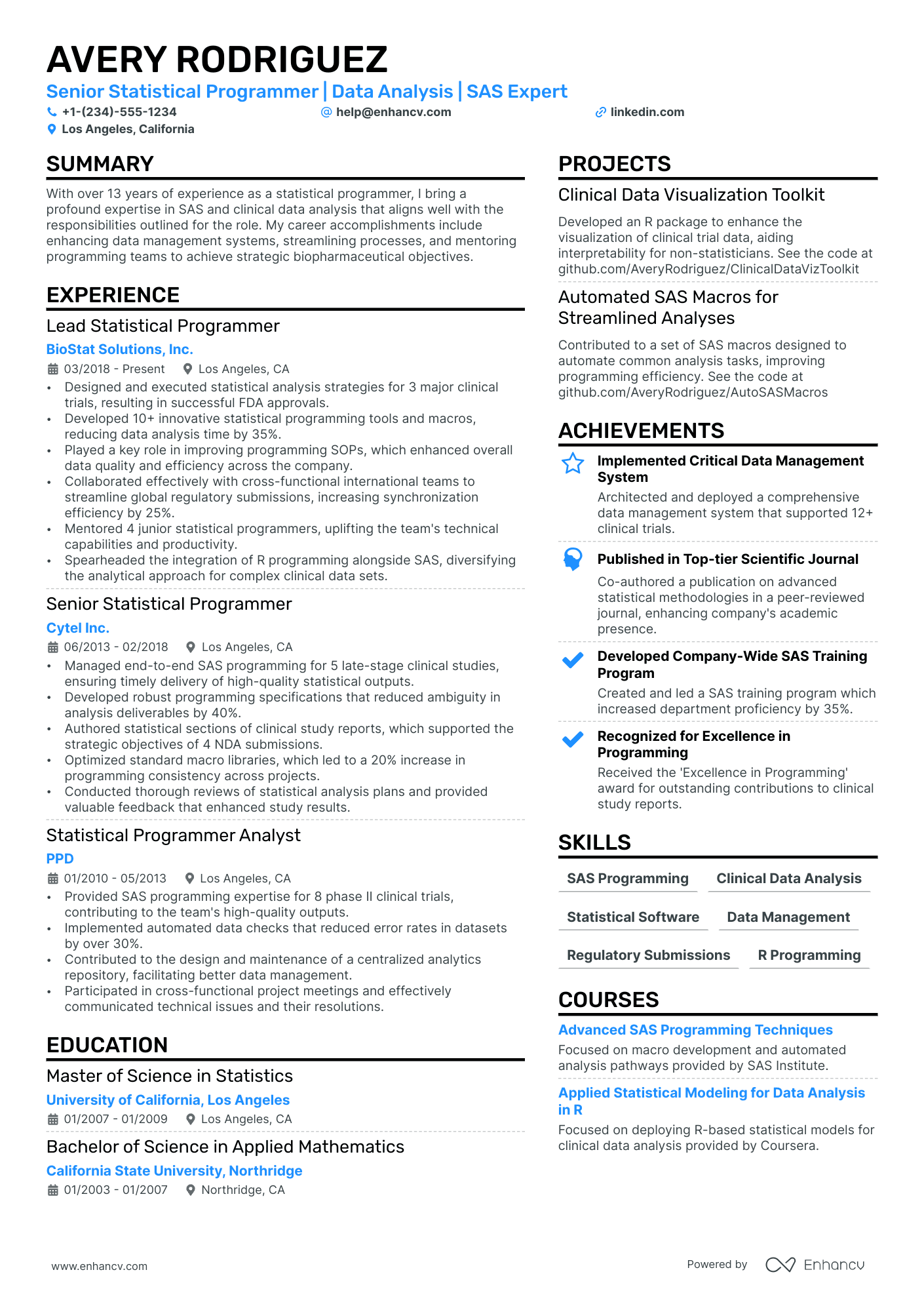Have you ever wondered if your skills are up to par with the job market? What about your programmer resume?
College grads know this feeling all too well.
And even if you have decades of experience under your belt, the feeling never really goes away.
There’s always pressure to know more. Or to have an obscure combination of skills and tools in your inventory.
The Imposter Syndrome is very real.
At the same time, we’ve all seen the strangely funny job ads. You know the ones - “We want someone who has 10 years of experience in a language that has existed only for 5 years”.
Makes you shiver, right?
But let’s not focus on these horror stories. Instead, let’s talk about navigating the current IT job market.
It won’t be an easy task as many of the positions have rigorous screening processes. Oftentimes vetting a potential employee takes up to a year.
But we’re here to help you set your best foot forward and get the needed callbacks.
Our thorough writing guide will teach you:
- How to frame your resume for the specific job position
- How to pitch yourself even if you lack working experience or just switching careers
- How the way you tailor your resume can have an effect of the interview screening process
- Which resume layouts are favored by hiring managers
- What recruiters really want to know and how to show it in your resume
- Which bits of information you need to highlight depending on your level of expertise
- How to balance out the soft and hard skills to present a well-rounded story
How to design and build a winning programmer resume
That’s the thing with resumes - it’s all subjective.
They can vary by the programming languages you include or the experience you have. Even a shift in the focus can play a major role.
But, there are a few rules of thumb which can help you out along the way.
Having all your information at hand, first, you need to decide which resume layout is best for your case. You have three format options:
What’s the difference between the three?
Generally, the reverse-chronological resume is considered the traditional format. As such, it is most preferred by hiring managers.
Why?
It allows you to share the breadth of your expertise and the scope of your responsibilities.
But, unless:
- you’re gunning for a senior or a managerial position
- and have the experience to show for it
you’re better off with the other two options.
If you have some experience as a programmer, you can go hybrid. This resume layout is malleable, so you can add equal parts education and experience.
That way, you can expand on the extent of your abilities. Moreover, you can boast about all the extra talent you have to offer.
By contrast, if you’re a college grad who’s just starting to apply for jobs, consider the functional resume. The format focuses primarily on your skills and how you’ve acquired them.
Don’t forget to mention relevant college club memberships. Notable projects you’ve worked on stand out to recruiters, too.
Also, include competition awards and prizes.
All these show that you’re a proactive candidate who shows:
- Time management skills
- Responsibility
- Resource management
- Ability to learn and adapt
- Willingness to openly discuss work processes and methodologies
Who would’ve thought you can derive so much information from an entry-level resume, huh?
So, don’t sell yourself short!
Here is how everything we’ve discussed so far sums up:
The programmer resume sections you can't go without:
- A well-formatted header, listing all the vital contact and portfolio information
- A resume summary or objective, depending on your work history
- An experience section to display your talents in action
- A skills box to highlight your top technical and social abilities
- An education and certificates section to show you follow the best industry practices
- Other sections you can include to add more to your personal story
It seems like it’s almost too much to fit in one single page, doesn’t it?
Especially if you have lots to talk about.
But, there is a way around this, too. As long as you think about the questions below when deciding which bits you want to trim, you’ll be alright.
What are recruiters searching for in your resume?
- Which are your top three technical skills?
- Which tools and databases are you most familiar and comfortable with?
- Do you have any language or tool preferences? Why?
- What attracted you to this particular role? How does it relate to your past positions?
- Are you switching careers? Why?
- What are your biggest accomplishments so far? What about challenges?
- Do you have an interest in other fields you haven’t had the chance to explore yet?
- What else motivates you?
Notice that some of these touch upon subjects you may be asked about in the interview. And this is no coincidence. After all, your resume is the prelude to the job interview.
Pro tip
Oftentimes companies are searching for someone who is needed to fix a current issue. Carefully read the job requirements.
How does your resume compare to what the job demands?
The resume header: getting back to basics
It’s never a bad idea to start from the fundamental building blocks of your resume.
It may seem like a trivial exercise to you. But you do remember the first time you managed to make “Hello, world!” appear on your screen, right?
So, what are the important pieces of information you must include in your resume? You need:
- Your name
- The role you’re applying for
- Address (city and state)
- Contact information (phone number and email)
- Link to your portfolio
Depending on the type of programming you do and your skill set, any of the following will do:
- Github or CodePen profile
- Personal .dev website
- Stack Overflow profile
These give technical teams the opportunity to review your portfolio. If they like how you approach different problems, you’ve already got one foot in the door.
What about those without a portfolio?
First of all, get one.
There is no adequate excuse for not having one.
Even if it’s full of small projects, it means you’re motivated to upskill and share your work with others.
In the meantime, add your LinkedIn profile. This way recruiters can vet your social media conduct and see if you fit the company culture.
2 programmer resume header examples
Let’s look at how one of our clients, Thomas, tackled his initial draft:
How many issues do you see here?
- Thomas hasn’t mentioned what type of developer he is. He could have revealed a language or a database he’s familiar with in the job title.
- Despite listing his email, Thomas hasn’t provided another means of contact.
- His full location is also missing. Potential employers have to verify your location for legal purposes.
Have a look at the revised version:
Much better, isn’t it?
What’s next?
How to write an impressive resume summary which appeals to recruiters
The next on your to-do list is to come up with a compelling resume objective or summary.
What’s this?
Typically, the resume summary is your way to highlight your biggest achievements. It also serves as an elevator pitch.
Just like you can do many things with a little snippet of code, a lot can be communicated with a few sentences.
So, what’s the difference between the two?
The objective is used mainly by:
- Entry-level candidates
- Self-taught individuals
- Those switching careers
- Internship applicants
- Junior programmers
If you lack practical experience, list your technical credentials in a resume objective. And show how you will benefit your potential employer.
In contrast, if you have some work experience under your belt and want to show off, compile a resume summary. This one is more appropriate for:
- Mid-level and senior applicants
- Niche specialists
- Freelancers
- Candidates aiming at managerial and executive positions
Pro tip
Don’t forget to quantify your accomplishments. Link them to verifiable results. Hiring managers want to make sure you’re the right person for the job.
Remember, numbers speak volumes.
2 programmer resume summary examples
Check out this sample summary. Does it sound believable?
Not really. But why?
It’s very bland. The applicant doesn’t provide any useful information.
Yes, the candidate has detailed the amount of experience she has. The business niche is also there. Some of her skills, too.
But nothing says how these were used and to what end. The outcome is missing.
As we mentioned above, summaries are for more experienced professionals. This candidate does not paint a convincing picture of a skilled developer.
Do you know what this looks like?
Someone trying to execute code in front of a potential client and receiving a fatal error.
Here is a better edit of the summary:
Wow, when can this person start work?
If you’re still unsure how to go about the resume summary, don’t get stuck. Finish all the other sections first, then think about what stands out most to you.
Or worse - if there is anything missing.
Pick your proudest accomplishment, quantify it and include it in your summary.
The programmer resume experience section: avoiding infinite loops
You may be wondering - what do infinite loops have in common with your resume?
The answer - unwanted repetition.
Many people fall into the trap of detailing the same job duties for each entry. Nobody wants to read a recycled to-do list.
To bypass this issue, apply the CAR method.
What does CAR stand for?
Challenge-Action-Result.
Think about what have been your biggest challenges at each of your past positions. How did you tackle them? What was the result?
If the job ad is focused around a particular language - customize your resume to reflect this.
For example, let’s say the position asks for someone proficient in Python. When listing your experience, put the tech-related ones in the first two bullet points.
Show how you have used Python in the past. And lead with results!
Why?
Because recruiters will immediately see the information they need.
If you show you can do the magic they want with a tool of their choice, expect a callback.
Pro tip
Try to update your resume regularly. Even if you’re not currently searching for a new position. Keep track of your achievements after each performance cycle.
Consider this your cheat sheet. This way, you can tailor your resume for specific job positions.
2 programmer resume experience examples
Take a look at the following example:
- •Used Python to test and debug web-based data management systems.
- •Developed and debugged applications and tools.
- •Automated work processes.
A bit lackluster, isn’t it?
Thomas has made a few mistakes here:
- His job title doesn’t say much when it comes to what type of programmer he is. Only when you read one of the bullet points you learn he knows Python.
- The company description is missing. It doesn’t have to be too long. But a single sentence, mentioning the business niche is a nice touch.
- The second and third bullet points look generic
- None of the entries are linked to quantifiable outcomes
What can be changed?
- •Achieved 58% decrease in patient waiting time by testing and debugging 21+ Python web-based data management systems.
- •Reduced hospital staff reporting time by 30% as a result of developing and debugging 7+ Django-based applications and tools.
- •Won the Best Healthcare Information System Award for 2019 after participating as a tester in a three-member team.
- •Helped the in-house business analysis team increase reporting accuracy by 1.9% as a result of automating recurrent work processes.
Now these are results any Junior Python Developer would be proud of!
If you need more pointers on how to edit this section, read our How to Describe Your Resume Work Experience article.
Balancing out your social and technical sides on your programmer resume
Many would probably relate developers to robots because of their insane technical skills.
We all know the fun of solving a puzzle for its own sake.
But in reality, you’ll be solving human problems. So you have to show your social side, too.
That’s why when considering what to add or discard, don't let your hard skills overcrowd your resume.
The best way to exhibit your technical abilities
When listing your hard skills, there are three general rules you need to remember:
- Try to include no more than 10 hard skills.
- Begin your list with your strongest and most relevant abilities.
- Consider the variety of skills you cover. Mix in various languages, tools, platforms, and cloud technologies. But make sure there is a logical connection between them.
You may be wondering about this type of skill prioritization. It’s very simple - you’re hinting at what coding environment makes you feel most comfortable.
Plus, this may play a part later on.
Why?
Because the next stage includes technical interviews.
Hiring managers may wish to confirm your preferred languages or tools. And they'll start with those you've prioritized first.
76 key hard skills to have on your programmer resume:
- Visual Basic
- JavaScript
- HTML
- CSS
- Django
- Node.js
- Angular.js
- React.js
- Redux
- jQuery
- Mocha/Chai
- JSON
- REST APIs
- JSP
- C
- C++
- C#
- Selenium
- Solidity
- Rust
- Scala
- Haskell
- Go
- TypeScript
- Ruby on Rails
- Swift
- Automation
- Ant
- SQL
- AWS
- Azure DevOps
- PostgreSQL
- Docker
- Openshift
- MySQL
- FileMaker Pro
- FoxPro
- R
- Eclipse
- Java
- Python
- Hadoop
- Scikit-learn
- PHP
- Perl
- SAS
- LINQ
- Oracle
- Vb.net
- Kafka
- Falcon
- AIOHTTP
- MongoDB
- Springboot
- iOS, MacOS, Windows, Unix/ Linux
- Git
- ASP.NET
- MS Access
- Cobol
- JIRA
- Visual Studio
- GitHub
- Gimp
- PostMan
- Photoshop
- Atom
- Sublime
- SharePoint
- Jest
- Perficient
- Agile
- Pair Programming
- Scrum
- Kanban
- Test Driven Development
- Extreme
How to appeal to recruiters with your soft skills
There’s still a long time until AI can actually substitute humans. Even if this becomes a reality, humans will be required to act as final arbiters.
It’s not an easy task to talk about your social talents. But it’s not impossible.
All you have to remember is to quantify your skills. Yes, even social abilities can be measured.
To give you a better picture, take a look at the examples below:
You can use numbers, percentages, even prize awards. As long as your work is peer-reviewed and can be verified, you’re good to go.
So, now that you know how to discuss your social skills, which ones are trending?
35 essential soft skills to have on your programmer resume:
- Efficiency
- Focus
- Detail-oriented
- Team work
- Time management
- Responsibility
- Precision
- Attention to detail
- Developing solutions
- Patience
- Creativity
- Drive to learn
- Communication
- Motivation
- Organization
- Empathy
- Multitasking
- Prototyping
- Design
- Best practices and industry standards
- Problem-solving
- Inquisitiveness
- Strategic thinking
- Analytical thinking
- Troubleshooting
- Decision-making
- Leadership skills
- Project management
- Resourcefulness
- Dedication
- Strong work ethic
- Proactivity
- Ability to work under pressure
- Initiator
- Risk assessment
How Important is the Education Section on a programmer’s Resume?
If you’re coming from an academic background, some of the most sought after degrees include:
- BS Computer Science
- BS Information Technology
- AS Computer Information Science
But don’t worry if your education path is different.
TechRepublic reported that more and more recruiters are onboarding developers from non-traditional backgrounds.
So, don’t make the education section unnecessarily long.
Everything you’ve listed in your hard skills section can be assessed later on.
We’re truly entering an era where it’s less ‘who you know’ and more ‘what you know.’ These are long overdue changes that will benefit both candidates and employers in the long run. Hiring based on skills instead of factors like college name or the candidate’s geographic location will bring stronger, more diverse talent to the table.
Amanda Richardson, CEO at CoderPad
Here are some extra tips on how to format the Education section of your resume.
Which certificates will impress hiring managers?"?
In most cases, these are much more valuable than a degree in Computer Science.
Why?
Because many companies use branded tools and platforms. If you’ve got the brand’s seal of approval to operate their software, that’s all that matters.
25 must-have programmer certificates for your resume:
- Amazon Web Services Certificate (check which one is relevant to your field)
- Microsoft Azure Certificate
- Microsoft MTA Certificate
- Microsoft Certified Solutions Associate (MCSA)
- Microsoft MCSE Productivity Solutions Expert
- CompTIA IT Fundamentals (ITF+) Certification
- CompTIA A+ Certification
- CompTIA Certified Technical Trainer (CTT+) Certification
- CompTIA Network+ Certification
- CompTIA Data+
- CompTIA Project+
- CompTIA Cloud Essentials+
- ComTIA Server+
- CompTIA Cloud+
- CompTIA Linux+
- CompTIA PenTest+
- CompTIA CySa+
- CompTIA CASP+
- Oracle Java EE and Web Services Certification
- Oracle APEX
- Oracle (OCP, OCM, OCE)
- RedHat
- Google Cloud
- Cloudera (CCDH)
- Salesforce
Is there anything else you can add to your programmer resume?
Undoubtedly!
Depending on your circumstances, there are many things you can append to your resume. Some of these include:
- Cover letter
- Awards and prizes
- Association memberships (ACM, AAAI, AWC, etc.)
- Programming club participation
- Publications and patents
- Industry and business blogs
- Volunteering experience
- Coaching and mentoring bootcamps
- Hackathon and conference experience
- Interests
You have so much to choose from. Don’t underestimate the interests section. Your hobbies can shed a light on your chosen career path
If you’re wondering what interest you can throw in the mix, here are some of our suggestions:
- Automation
- Robotics
- NLP
- AI
- Machine Learning
- Cyber Security
It’s Been a Long Journey: Key Takeaways Before You Start Writing
- Take into account your education and experience and choose the appropriate resume format
- Carefully read the job posting and tailor your resume accordingly
- Compile a resume objective, if you’re switching careers or a junior programmer
- Compose a resume summary if you’re striving for an executive or managerial position
- Link to your online developer portfolio in the resume header
- Balance out the soft and hard talents on your resume
- Rank your technical skills by job relevance and level of familiarity
- Don’t get discouraged if you don't have a traditional academic background
Programmer resume examples
Explore additional programmer resume samples and guides and see what works for your level of experience or role.
By Experience
Entry-Level Programmer
Senior Programmer
By Role
